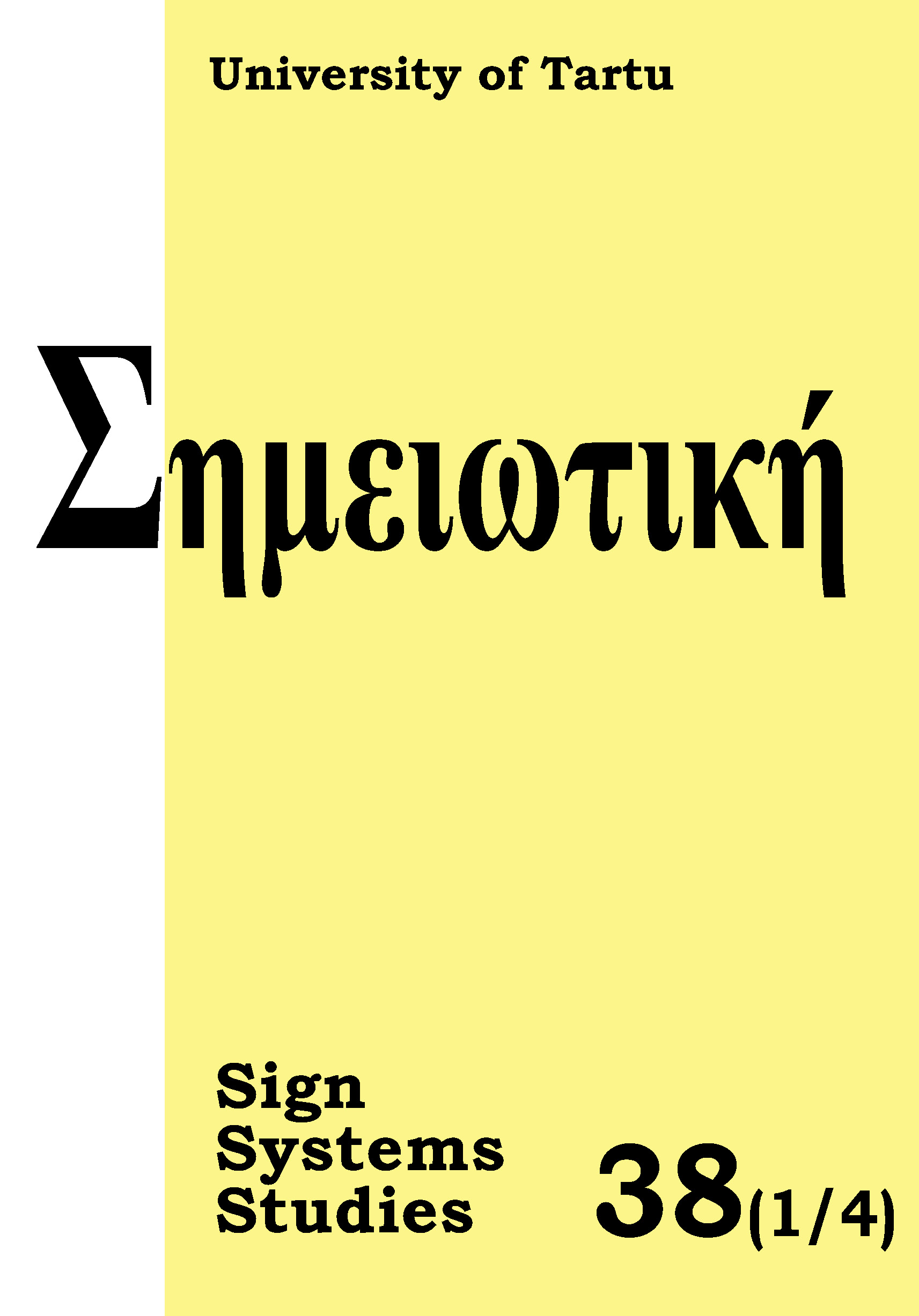Cross-modal iconicity: A cognitive semiotic approach to sound symbolism
DOI:
https://doi.org/10.12697/SSS.2010.38.1-4.11Abstract
It is being increasingly recognized that the Saussurean dictum of “the arbitrariness of the linguistic sign” is in conflict with the pervasiveness of the phenomenon commonly known as “sound symbolism”. After first presenting a historical overview of the debate, however, we conclude that both positions have been exaggerated, and that an adequate explanation of sound symbolism is still lacking. How can there, for example, be (perceived) similarity between expressions and contents across different sensory modalities? We offer an answer, based on the Peircian notion of iconic ground, and G. Sonesson’s distinction between primary and secondary iconicity. Furthermore, we describe an experimental study, in a paradigm first pioneered by W. Köhler, and recently popularized by V. Ramachandran, in which we varied vowels and consonants in fictive word-forms, and conclude that both types of sounds play a role in perceiving an iconic ground between the word-forms and visual figures. The combination of historical conceptual analysis, semiotic explication and psychological experimentation presented in this article is characteristic of the emerging paradigm of cognitive semiotics.Downloads
Download data is not yet available.
Downloads
Published
2010-12-01
How to Cite
Ahlner, F., & Zlatev, J. (2010). Cross-modal iconicity: A cognitive semiotic approach to sound symbolism. Sign Systems Studies, 38(1/4), 298–348. https://doi.org/10.12697/SSS.2010.38.1-4.11
Issue
Section
Articles


